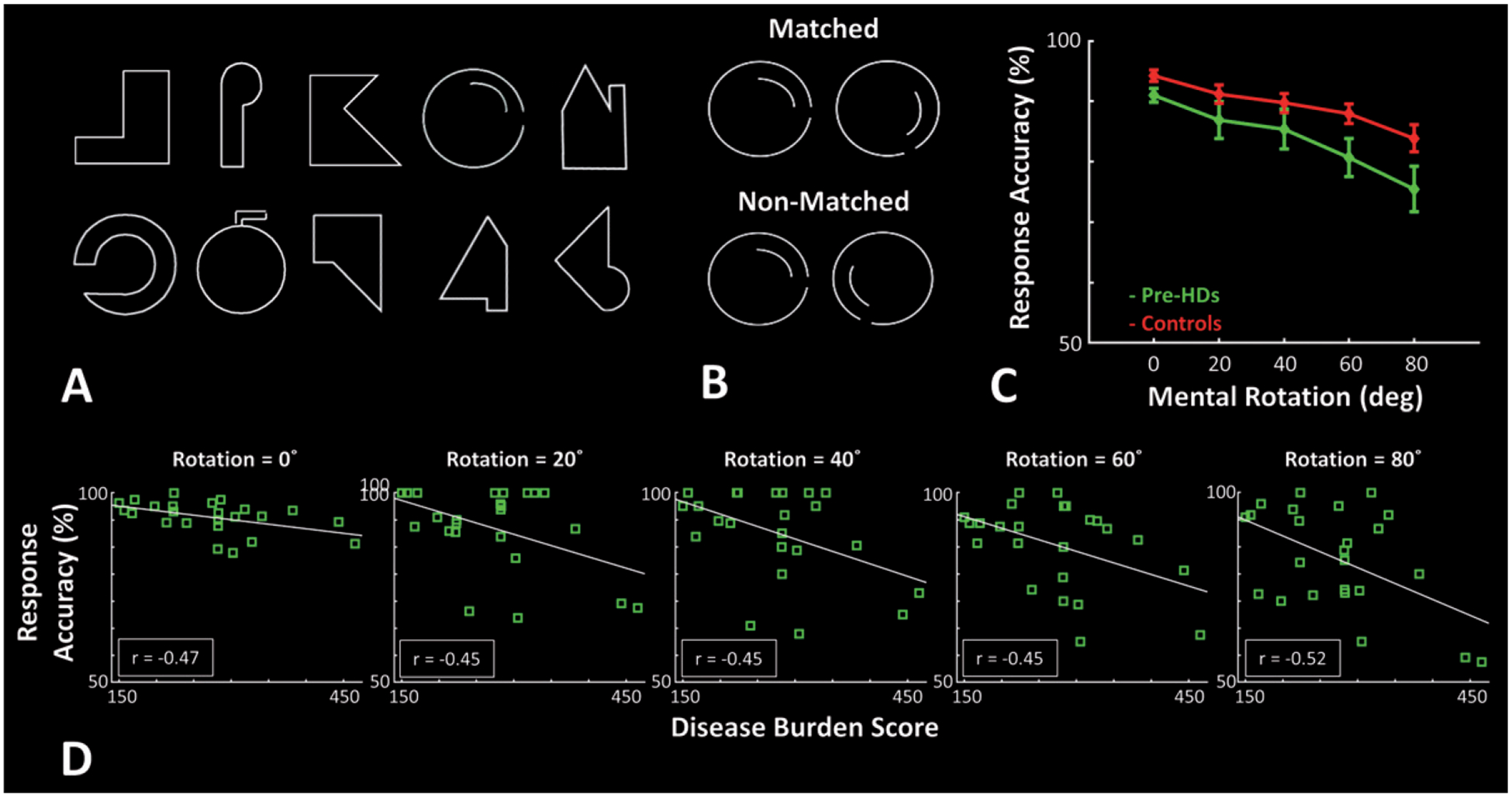Fig. 1.

Experimental procedure and participants’ response accuracy during the mental rotation task. A) Stimuli were 10 different line drawing shapes subtended 4° × 4° on the screen. B) In each trial, two stimuli were presented side-by-side with 4° center-to-center distance. In 50% of trials they were matched, and in the rest of trials they were non-matched. C) Response accuracy of Pre-HDs (green) and healthy matched controls (red) decreased with increase in the mental rotation degree, and Pre-HD showed a lower response accuracy relative to healthy matched controls. D) In all mental rotation conditions, response accuracy of Pre-HD individuals decreased with increase in disease burden score [34]. Error bars show one standard error of mean.
